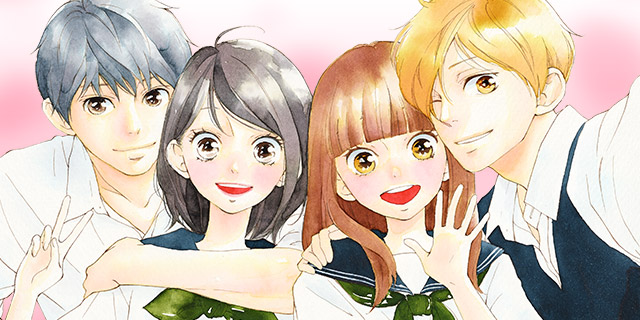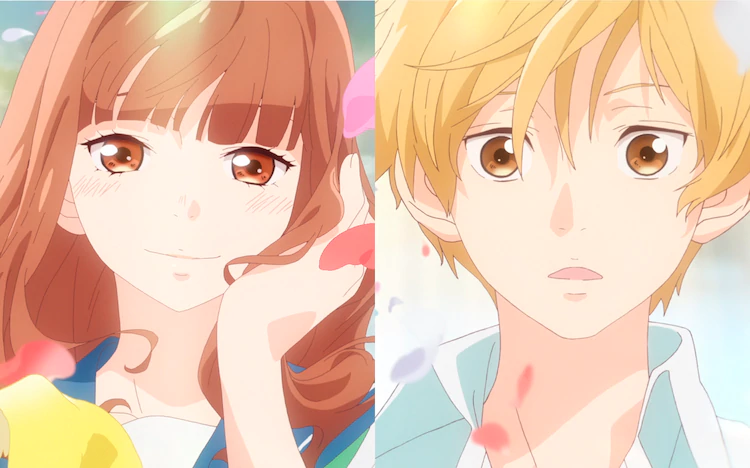This review explores Io Sakisaka’s manga Love Be Loved, Leave Be Left, a heartfelt shoujo story about friendship, romance, and growing up. We’ll dive into the lives of Yuna, Akari, Rio, and Kazuomi as their feelings intertwine, highlighting the manga’s art style, character depth, emotional storytelling, and why it’s a must-read for fans of coming-of-age romances.
Discovering Love Be Loved, Leave Be Left on ComicK
When I first picked up Love Be Loved, Leave Be Left on ComicK, I didn’t expect to be pulled so deeply into the world of Yuna, Akari, Rio, and Kazuomi. Io Sakisaka has always had a way of capturing teenage emotions in their rawest, most vulnerable form, and this series is no exception. What looks like a typical shoujo romance at first glance quickly reveals itself to be a layered story about love, friendship, and the fragile process of growing up.
As someone who has read countless romance manga, I can honestly say this story touched me differently. It isn’t just about falling in love it’s about learning how to accept love, how to move on when it’s unrequited, and how friendship can evolve into something much deeper. Reading this manga felt like sitting down with my younger self and reliving all the bittersweet emotions of first love.

That’s why I believe this manga is not just for teenagers. Anyone who has ever stumbled through love, loss, or self-discovery will find a piece of themselves in these pages. If you’re looking for a heartfelt, relatable, and beautifully drawn series, this is one you can’t afford to skip.
Yuna and Akari: Two Girls, Two Different Worlds
One of the most compelling aspects of this manga is the contrast between Yuna and Akari. Yuna is the dreamer, someone who has always believed in fairy-tale love but struggles when reality doesn’t fit her expectations. On the other hand, Akari is practical, confident, and unafraid of interacting with boys. Their personalities clash at times, but it’s exactly this difference that strengthens their friendship.
What struck me most is how their relationship challenges each girl to grow. Yuna learns that love isn’t always the grand, sweeping gesture she imagines, while Akari realizes that vulnerability doesn’t make her weak it makes her human. Watching them balance each other out felt like watching two puzzle pieces finally click together.
This dynamic also makes the story much more than just a romance. It’s about friendship as the foundation for self-discovery. Many shoujo manga focus only on the love story, but here, the friendship between Yuna and Akari feels just as important, if not more so, than their romances.
Rio and Kazuomi: The Boys Who Complete the Puzzle
Of course, no shoujo manga is complete without the boys, and Rio and Kazuomi add layers of complexity to the story. Rio, with his prince like appearance, immediately captures Yuna’s heart, but his own feelings are tangled in a forbidden love for his stepsister, Akari. This secret adds both tension and tenderness, making his character one of the most intriguing in the series.
Kazuomi, in contrast, is steady and reliable the childhood friend who seems oblivious to romance but carries a quiet strength that makes him irreplaceable. His chemistry with Akari grows slowly, but it’s the kind of slow-burn relationship that feels natural and deeply satisfying to watch unfold.
Together, these four characters create a web of emotions that feels authentic. The beauty of this manga lies not in love triangles or forced drama but in the honest, sometimes painful way people’s feelings don’t always line up the way they wish.
The Art Style: Classic Shoujo with a Touch of Warmth
Io Sakisaka’s art is exactly what you’d expect from a master of shoujo storytelling delicate lines, expressive faces, and just enough detail to make every panel feel alive. Yuna’s doll-like features reflect her innocence, while Akari’s choppier hairstyle highlights her down-to-earth personality. It’s subtle details like this that bring the characters’ personalities to life visually.
Rio and Kazuomi, drawn in that quintessential “handsome shoujo boy” style, manage to stand out from each other despite their similarities. The soft bokeh backgrounds add an atmosphere of tenderness, almost like you’re seeing the world through the eyes of a teenager in love.
What I personally love is how Sakisaka uses visual storytelling to amplify emotions. A simple close-up of Yuna’s eyes, filled with hesitation, speaks louder than pages of dialogue ever could. It’s this artistic sensitivity that keeps readers hooked panel after panel.

Themes of Love, Friendship, and Growing Up
At its core, Love Be Loved, Leave Be Left is more than a romance it’s a coming-of-age story. It explores the complexity of unrequited love, the courage it takes to confess, and the bittersweet reality that not every story has a fairy tale ending. These themes resonate deeply, especially for anyone who remembers the emotional chaos of high school years.
What sets this manga apart is its balance between lighthearted moments and emotional depth. There are plenty of sweet, heart-fluttering scenes, but there are also moments of quiet heartbreak that hit harder because of their realism. It’s this mix of joy and pain that makes the story feel authentic.
By the end of each volume, I found myself reflecting not just on the characters’ growth but also on my own teenage years. That’s the mark of a truly powerful story it doesn’t just entertain you, it makes you remember who you once were.
Why This Manga Belongs in Your Collection
Whether you’re a seasoned manga reader or just starting your journey into shoujo, Love Be Loved, Leave Be Left is a must-read. It offers everything engaging characters, heartfelt storytelling, beautiful artwork, and themes that resonate across cultures and ages.
This manga is perfect for younger readers discovering romance for the first time, but it’s equally powerful for adults who want to revisit the tenderness and struggles of youth. Personally, I found it both nostalgic and refreshing a reminder of how universal the language of love and friendship really is.
If you’re looking to add something meaningful to your manga shelf, this is the title to choose. And the best part? You can experience it all firsthand on ComicK, where stories like this come alive in the most personal way.
Read more:
- Exploring Deadpool: Samurai – Marvel Meets Shonen Madness
- Unveiling Deserter: Junji Ito Story Collection’s Dark Secrets
